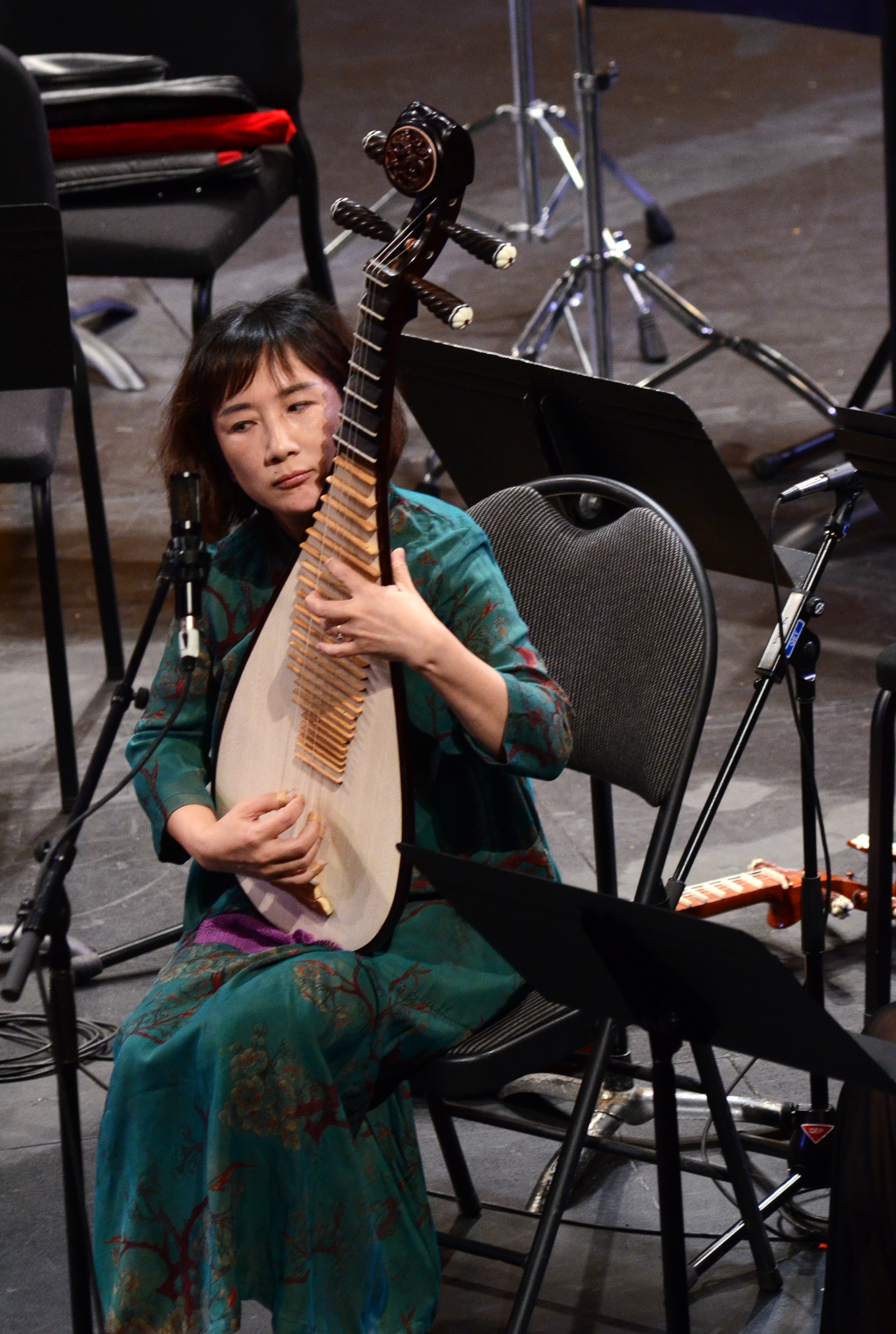Pipa

In the plucked string group, the leading instrument is the pipa. It is a pear-shaped lute-like instrument with four strings. The pipa makes a good solo or ensemble instrument.
The four strings are spread across the fret board of 20 to 25 frets. The pipa is held vertically and plucked with the right hand. Plectrums are attached to the right hand. The “pi” and “pa” plucking sounds are said to be the origin of the instruments name.
Different types of music exist for the pipa. Major defining differences are the hand in which the majority of the technique is required from. Some styles require more technique from the left hand where as others from the right.
Historically, its ancestor could well be the Persian barbat. The instrument was originally held horizontally and played with a plectrum. The Japanese biwa, which traces its origins back to pipa introduced to Japan during the Tang dynasty, can still sometimes be seen played horizontally. Because the Chinese have played the pipa for so many years and have developed so many different techniques for playing it, the pipa is considered to be characteristic of Chinese music.